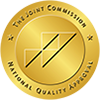Recent research shows that nearly 10% of adults and up to 25% of college students engage in a dangerous drinking pattern termed high-intensity drinking. This involves consuming alcohol at levels twice or three times the binge drinking threshold—8+ drinks for women and 10+ drinks for men on one occasion.
The consequences are evident nationwide, with over 95,000 alcohol-related deaths annually in the U.S. High-intensity drinking elevates risks of alcohol poisoning, injuries, sexual assault, and death compared to moderate drinking. Alarmingly, many do not recognize its severity or differentiate it from social drinking.
This pattern accelerates the risk of alcohol use disorder, with those regularly consuming at these levels 70% more likely to develop dependence within a year compared to those who binge without reaching high intensity. This quick progression turns college drinking into a serious health concern requiring professional intervention.
At 12 South Recovery, we witness the severe health impacts of high-intensity drinking, which often leads to alcohol addiction. Understanding this pattern is crucial to protecting yourself and loved ones.

What Defines High-Intensity Drinking?
Beyond Binge Drinking: Measuring Dangerous Consumption
To understand high-intensity drinking, it helps to place it within the spectrum of alcohol consumption patterns:
Moderate drinking generally refers to up to 1 drink daily for women and up to 2 drinks daily for men, according to the Dietary Guidelines for Americans.
Binge drinking is defined as consuming enough alcohol to reach a blood alcohol concentration (BAC) of 0.08% or above, typically 4+ drinks for women and 5+ drinks for men within about 2 hours.
High-intensity drinking takes this further, defined as consuming alcohol at levels twice (8+ drinks for women, 10+ drinks for men) or three times (12+ drinks for women, 15+ drinks for men) the binge drinking threshold during a single occasion.
These aren’t just arbitrary numbers—they represent thresholds at which the body’s ability to process alcohol becomes overwhelmed, leading to dangerous blood alcohol levels and significantly increased risk of harm.
The Physiology of Extreme Alcohol Consumption
What happens in the body during high-intensity drinking explains why it’s so dangerous:
The liver can only process about one standard drink per hour. When alcohol enters the system faster than this rate, blood alcohol concentration rises quickly, affecting multiple organ systems.
At twice the binge drinking level, blood alcohol concentration typically reaches 0.16% or higher—a level associated with severe impairment, nausea, and potential blackouts.
At three times the binge level, BAC often exceeds 0.24%, creating risk of alcohol poisoning, respiratory depression, and in extreme cases, death.
The brain experiences significant effects during high-intensity drinking, with alcohol suppressing areas responsible for vital functions like breathing and heart rate while impairing judgment, coordination, and memory formation. This combination explains why high-intensity drinking episodes often involve other risky behaviors and why many people can’t recall parts or all of these drinking events.
The Dangers of High-Intensity Drinking
Immediate Health Risks
High-intensity drinking creates several immediate dangers:
Alcohol poisoning becomes a significant risk as the body cannot process the amount of alcohol consumed. Symptoms include confusion, vomiting, seizures, slow or irregular breathing, hypothermia, bluish skin, and unconsciousness. Without prompt medical attention, alcohol poisoning can be fatal.
Injuries increase dramatically during high-intensity drinking episodes. Research shows that people who drink at high-intensity levels are 3-4 times more likely to experience falls, burns, drownings, and vehicle crashes compared to those who drink moderately.
Risky behaviors often accompany high-intensity drinking due to severely impaired judgment. These may include unprotected sex, driving while intoxicated, aggression, and other activities that wouldn’t occur while sober.
Blackouts occur frequently during high-intensity drinking. These aren’t merely forgetting what happened—they represent periods when the brain cannot form new memories despite the person remaining conscious and active. During blackouts, people remain at elevated risk for victimization and making harmful decisions.
Long-Term Health Consequences
Beyond immediate risks, regular high-intensity drinking creates lasting health problems:
Liver damage accelerates with high-intensity patterns. The liver, responsible for filtering alcohol from the bloodstream, experiences significant stress during these episodes. Repeated high-intensity drinking can lead to fatty liver disease, alcoholic hepatitis, and eventually cirrhosis.
Brain changes occur with repeated high-intensity exposure to alcohol. Research using brain imaging shows that regular high-intensity drinking alters brain structure and function, particularly in areas responsible for decision-making, impulse control, and memory.
Cardiovascular problems develop more quickly with high-intensity patterns. While moderate alcohol consumption might have some protective cardiovascular effects, high-intensity drinking increases the risk of high blood pressure, irregular heartbeat, cardiomyopathy, and stroke.
Mental health complications frequently co-occur with high-intensity drinking. Depression, anxiety, and other mental health conditions both contribute to and result from this drinking pattern, creating a cycle that becomes increasingly difficult to break without professional help.
The cumulative impact of these health effects explains why high-intensity drinking reduces life expectancy so significantly, with studies suggesting that regular engagement in this pattern can shorten life by 10-15 years.
Who’s Most at Risk for High-Intensity Drinking?
Age and Demographic Patterns
Research identifies several groups with higher rates of high-intensity drinking:
College students show exceptionally high rates, with studies finding that 1 in 4 college students who drink report high-intensity consumption. With its particular social pressures and drinking culture, the college environment creates conditions where extreme consumption becomes normalized.
Young adults (18-34) generally show higher rates than older age groups, though high-intensity drinking occurs across all ages. This age period often combines maximum biological capacity for alcohol consumption with minimum life responsibilities that might otherwise limit drinking.
Men engage in high-intensity drinking at higher rates than women, though the gender gap has narrowed in recent years. When women do engage in high-intensity drinking, they experience more severe health effects due to biological differences in alcohol processing.
Certain professional groups, including those in high-stress occupations or industries with established drinking cultures (hospitality, construction, healthcare), show elevated rates of high-intensity consumption.
Understanding these patterns helps identify who might benefit most from prevention efforts and early intervention.
Psychological and Social Risk Factors
Beyond demographics, certain psychological and social factors increase vulnerability:
Mental health conditions, particularly anxiety, depression, PTSD, and ADHD, correlate strongly with high-intensity drinking. Many people use alcohol to self-medicate these conditions, unintentionally creating a more serious problem.
Trauma history significantly increases risk, with many people using extreme alcohol consumption to numb emotional pain or temporarily escape traumatic memories.
Peer groups and social environments that normalize excessive drinking create a powerful influence. Being surrounded by others who drink at high-intensity levels makes this pattern seem acceptable or even expected.
Family history plays a dual role through both genetic factors that affect how alcohol interacts with the brain and modeling of drinking behaviors during formative years.
At 12 South Recovery, we carefully assess these risk factors when helping clients address alcohol use disorders, recognizing that effective treatment must address both the drinking behavior and these underlying influences.
Signs High-Intensity Drinking Has Become a Problem
Warning Signs to Watch For
Several indicators suggest high-intensity drinking has moved beyond occasional behavior to a serious problem:
Tolerance increases, requiring more alcohol to achieve the same effects. When someone needs increasingly more significant amounts to feel intoxicated, it signals the body has adapted to regular high alcohol exposure.
Withdrawal symptoms appear when not drinking, potentially including shakiness, anxiety, irritability, nausea, or sleep disturbances. These physical signs indicate that dependence has developed.
Life consequences accumulate, including relationship problems, work or academic difficulties, financial issues, or legal troubles related to drinking. These consequences rarely occur with moderate alcohol use.
Failed attempts to control drinking despite a genuine desire to cut back or stop. This loss of control represents a hallmark feature of alcohol use disorder.
Drinking despite negative consequences continues even after experiencing problems directly related to alcohol. This persistent use despite clear harms suggests addiction has developed.
If you recognize these signs in yourself or someone you care about, they warrant professional evaluation. The transition from high-intensity drinking to alcohol use disorder often happens gradually, making these warning signs crucial for early intervention.
The Progression from High-Intensity Drinking to Addiction
Understanding how high-intensity drinking leads to addiction helps explain why early intervention matters:
The transition typically begins with increasing frequency of high-intensity episodes, often accompanied by expanding contexts where drinking occurs (from weekends only to weeknights, for example).
Physical dependence gradually develops as the brain adapts to regular alcohol exposure, creating both tolerance and withdrawal effects.
Psychological dependence follows as alcohol becomes a primary coping mechanism for stress, negative emotions, or social anxiety.
Loss of control emerges when attempts to limit consumption repeatedly fail despite increasing negative consequences.
This progression may occur over months or years, but high-intensity drinking patterns significantly accelerate this timeline compared to more moderate consumption.
Treatment Approaches for High-Intensity Drinking
Medical Support and Detoxification
For those who have developed dependence through high-intensity drinking, safe discontinuation often requires medical support:
Medically supervised detoxification provides monitoring and medication to manage withdrawal symptoms safely. Alcohol withdrawal can be dangerous or even life-threatening in severe cases, making professional supervision essential.
Medical assessment identifies and addresses health complications that may have developed during periods of high-intensity drinking, from nutritional deficiencies to organ damage.
At 12 South Recovery, our medical detox program provides 24/7 monitoring and support during this critical early phase, creating a safe foundation for further treatment.
Therapeutic Approaches for Recovery
Effective treatment for high-intensity drinking patterns involves several therapeutic components:
Cognitive Behavioral Therapy (CBT) helps identify and change thought patterns and behaviors related to drinking while developing healthier coping strategies.
Group therapy provides perspective, accountability, and peer support from others with similar experiences, reducing the isolation that often accompanies alcohol problems.
Family therapy addresses how drinking has affected relationships while helping loved ones understand addiction as a medical condition rather than a moral failing.
Dual diagnosis treatment simultaneously addresses any co-occurring mental health conditions like depression, anxiety, or PTSD that may drive high-intensity drinking.
Our treatment programs at 12 South Recovery include these evidence-based approaches, creating personalized recovery plans based on each client’s needs and circumstances.
Building Sustainable Recovery
Long-term success requires more than just stopping the drinking behavior:
Lifestyle restructuring creates healthy alternatives to previous drinking-centered activities and social connections.
Stress management skills provide healthier ways to handle life’s challenges without alcohol.
Ongoing support through continuing care programs and recovery communities sustains progress after formal treatment ends.
Relapse prevention planning identifies personal triggers and high-risk situations while developing specific strategies for managing them.
These elements build a foundation for lasting recovery, transforming temporary abstinence into sustainable life change.
Call 12 South Recovery Today
High-intensity drinking is a dangerous behavior that exceeds typical binge drinking, posing severe health risks and increasing the likelihood of alcohol dependence. Recognizing this pattern in yourself or a loved one allows intervention before serious consequences arise.
Understanding that high-intensity drinking goes beyond mere “partying” helps challenge the social normalization of this harmful consumption. The physical, psychological, and social harms of drinking at twice or three times the binge threshold require significant attention and response.
If you’ve noticed signs of high-intensity drinking or alcohol dependence, practical help is available. At 12 South Recovery, we offer comprehensive alcohol addiction treatment, including medical detox, residential treatment, outpatient care, and ongoing support for lasting recovery.
Has this information about high-intensity drinking resonated with your experiences or concerns for someone else? Contact us today to learn how our evidence-based approach can help address risky drinking behaviors. If you found this article helpful, please share it with others who may benefit from understanding this dangerous drinking pattern.






































